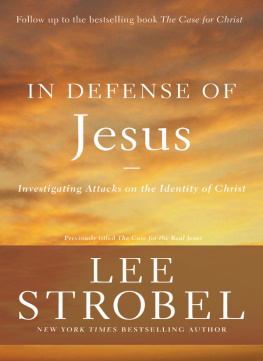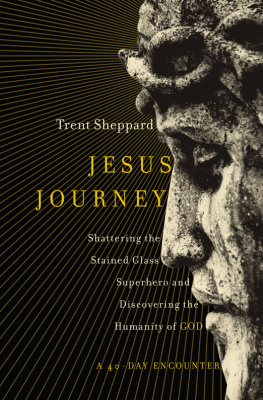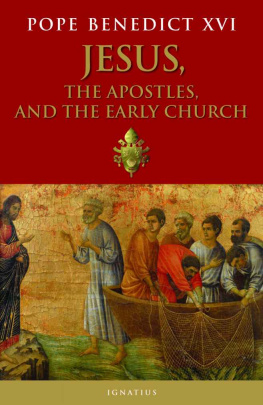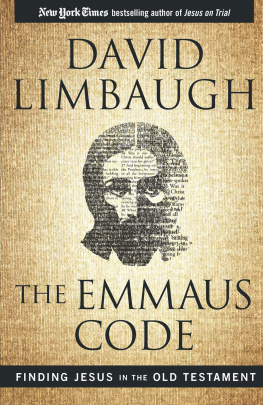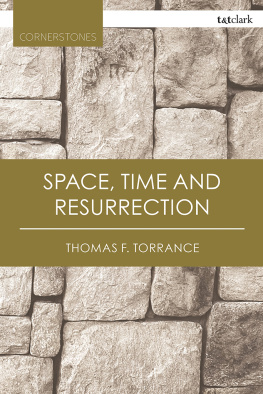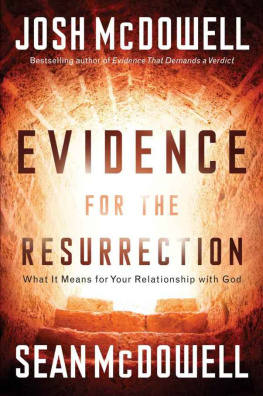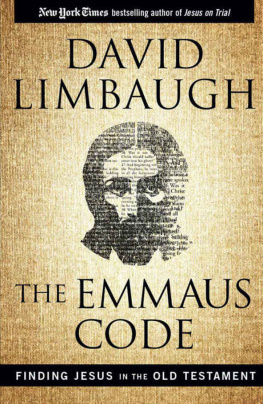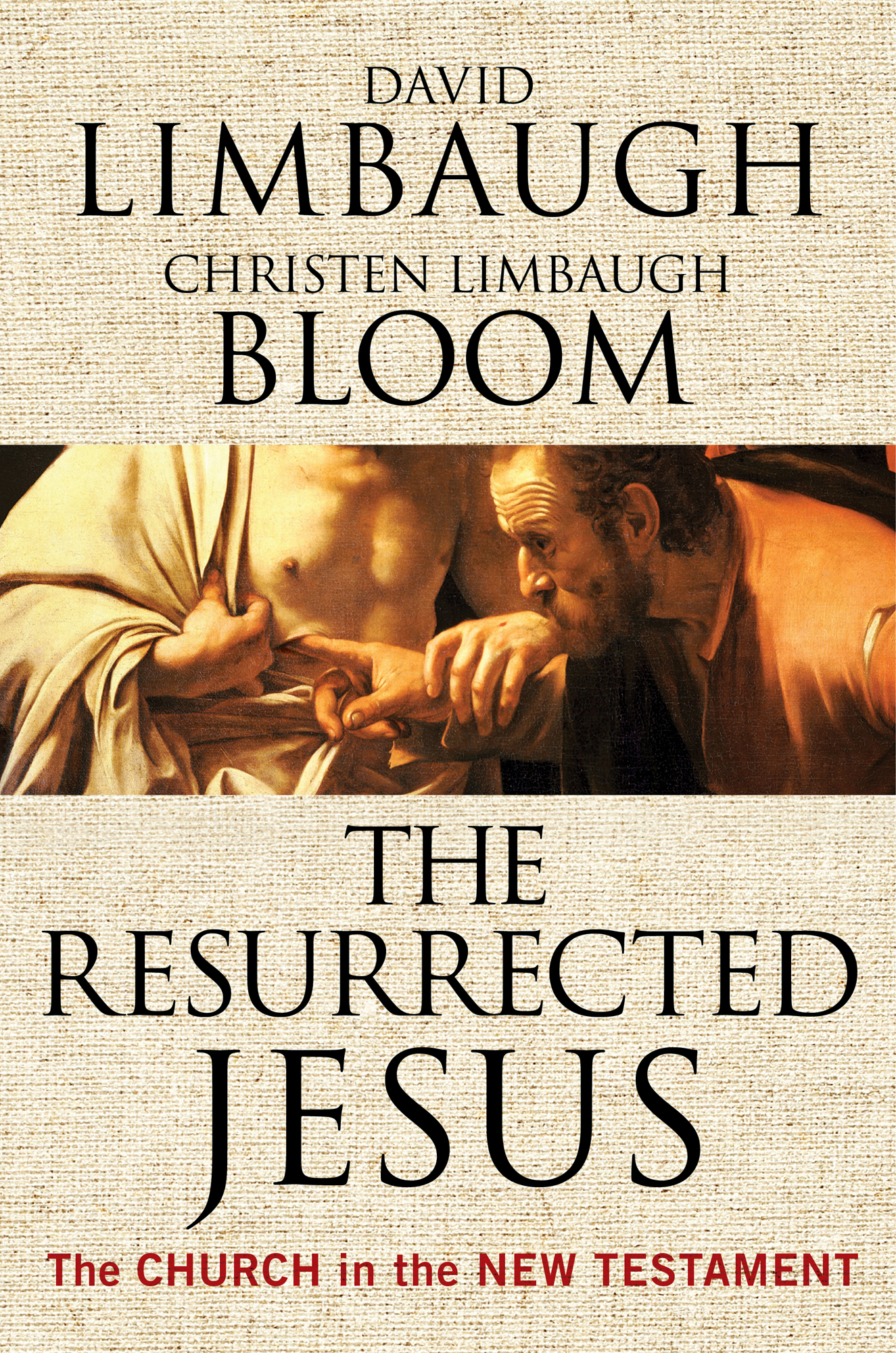Contents
Guide
David Limbaugh
Christen Limbaugh Bloom
The Resurrected Jesus
The Church in the New Testament
To my brother and Christens uncle, Rush, whose entire life was inspiring to me, and particularly his last year after receiving his diagnosis. During that year he grew closer and closer to Jesus Christ, thanking God for every precious day of his life. His courage in the face of this life-ending challenge and his open demonstration of faith, thankfulness, and love touched me and countless others. He was a brother like no other, who opened so many doors to me. I cant begin to express my gratitude. We also want to dedicate this book to Rushs fans who have reached out to us in droves to express their sympathy and their own sense of deep loss with his passing. God bless all of you, and thank you, sincerely.
INTRODUCTION
P rior to this book, I had written four Christian-themed books: Jesus on Trial, The Emmaus Code, The True Jesus, and Jesus Is Risen. I asked my daughter Christen to write this book with me. She is a spirit-filled Christian, a prayer warrior, and a wonderful writer, who sometimes writes Christian opinion pieces for the Fox News website. Several years ago she launched Haplous, an online Christian blog and Bible study community that seeks to help people strengthen their relationship with God. She has a heart for Christ and has great insight into the application of biblical principles to our daily lives. I thought it would be a great blessing for us to work together on this project and that with her perspective she could add a great deal to this pbook.
As explained in Jesus Is Risen, the New Testament contains twenty-seven books. The four gospels and the Book of Acts are historical books: the gospels are accounts of Jesus life, death, and resurrection, and Acts is the history of the early church. The final book of the New Testament is Revelation, which is categorized as apocalypse, prophecy, or revelation. The other twenty-one books are epistles, which are letters written mostly by apostles to churches or individuals. They deal with matters of doctrine, problems in local churches, Christian living, and other matters. Paul wrote thirteen epistles, known as the Pauline epistles, and the other eight are known as the general epistles. Seven of those were written by John, Peter, and Jesus brothers James and Jude. John wrote three, Peter two, and James and Jude each wrote one. The author of the other onethe Book of Hebrewsis unknown.
In Jesus Is Risen, I covered the Book of Acts and the Apostle Pauls six missionary epistlesGalatians, 1 and 2 Thessalonians, 1 and 2 Corinthians, and Romans, which most scholars believe were written during Pauls three missionary journeys and before his other seven epistles. This was in keeping with my approach in The True Jesus of presenting the gospel events in chronological order rather than their canonical orderthe order in which the books appear in the Bible.
In this book, Christen and I continue this practice and explore Pauls remaining seven epistles in the order most scholars believe he wrote them. These letters fall into two categoriesthe prison epistles and the pastoral epistles. Its widely believed that Paul writes the four prison epistlesColossians, Philemon, Ephesians, and Philippianswhile under house arrest in Rome. We know Paul is imprisoned when writing these letters because he says so (Eph. 3:1, 4:1; 6:20; Col. 4:18; Philem. 10, 13; Philip. 1:7, 13). Though he doesnt specify whether he is under arrest in Caesarea or Rome, scholars believe he pens these epistles during the Roman imprisonment.
Paul likely writes Colossians first to warn the church at Colossae against a dangerous heresy circulating there. Around the same time, he pens a personal letter to one of the churchs congregants, Philemon, and also prepares his letter for the Ephesians and other churches in that area. (He probably writes Philippians after the other three,
Though under house arrest for two years, Paul has the freedom to greet guests and preach the gospel to them with all boldness and without hindrance (Acts 28:30, 31). There, he learns of the heresies circulating in Ephesus, Colossae, and the surrounding areas. He addresses these issues in the epistles to the Colossians and Ephesians, and he writes a separate letter to his friend Philemon partially concerning Onesimus, a slave whom Paul led to Christ. After Epaphroditus brings him a gift from the church in Philippi, Paul reciprocates with a letter of encouragement and gratitude to the church, which he delivers through Epaphroditus.
Many scholars believe Paul is released from prison by Roman authorities and embarks on more missionary journeys before they imprison him again. Most scholars contend that during the interval between his imprisonments, he writes the three pastoral epistles, 1 and 2 Timothy and Titus.
Paul is a tireless evangelist; he plants many churches throughout his missionary journeys, and the new faith takes off like wildfire, with thousands becoming believers committed to Christ and to growing the church. But Paul realizes the church wont continue to flourish on its own, especially given Romes hostility to the burgeoning movement as well as the aging of the apostles. He knows its imperative to equip younger leaders and workers with the practical knowledge to carry on their work.
Despite his strong personality and determination to accurately present the gospel, Pauls letters reveal he is unafraid to delegate critical leadership tasks to younger trusted believers he mentored such as Timothy and Titus. They, in turn, are meant to raise up other leaders who will effectively multiply Pauls and their work. As Paul writes to Timothy, And the things you have heard me say in the presence of many witnesses entrust to reliable people who will also be qualified to teach others (2 Tim. 2:2). But Paul is not about to send his lieutenants out without further instruction, as he knows formidable opposition awaits them and that Satan specializes in misinformation. Diluting the gospel and conflating it with heretical ideas could destroy Christianity in its infancy. While God in His sovereignty superintends the spread of the message, He accomplishes that through His evangelistic foot soldiers and leaders like Paul who direct them.
Paul doesnt choose his proteges lightly. He adores Timothy as a dear son (2 Tim. 2) and is convinced of the sincerity of his faith, which his believing grandmother Lois and mother, Eunice, modeled to him while teaching him the Bible (2 Tim. 1:5, 3:15). With a Greek father and Jewish mother (Acts 16:1), Timothys fine reputation in his community (Acts 16:2) and his unique character traits particularly impress Paul, as he testifies to the Philippians, I have no one else like him, who will show genuine concern for your welfare. For everyone looks out for their own interests, not those of Jesus Christ (Philip. 2:2021). Indeed, such was Timothys devotion that he traveled on evangelistic missions with Paul despite his frequent illnesses (1 Tim. 5:23).
Timothy is not an apostle because he was not chosen by Christ as His direct representative. But his work is extraordinarily important as he is, notes J. P. Lilley, a general missionary superintendent, highly qualified to preach and teach, and empowered by the Apostolic Church to arrest the progress of error and guide organization in districts that had special needs. Since few things are more important to Paul than the purity of the gospel, his high regard for Timothy is shown by his delegation to him of the task of proclaiming and defending the truth, thereby preserving that purity.


